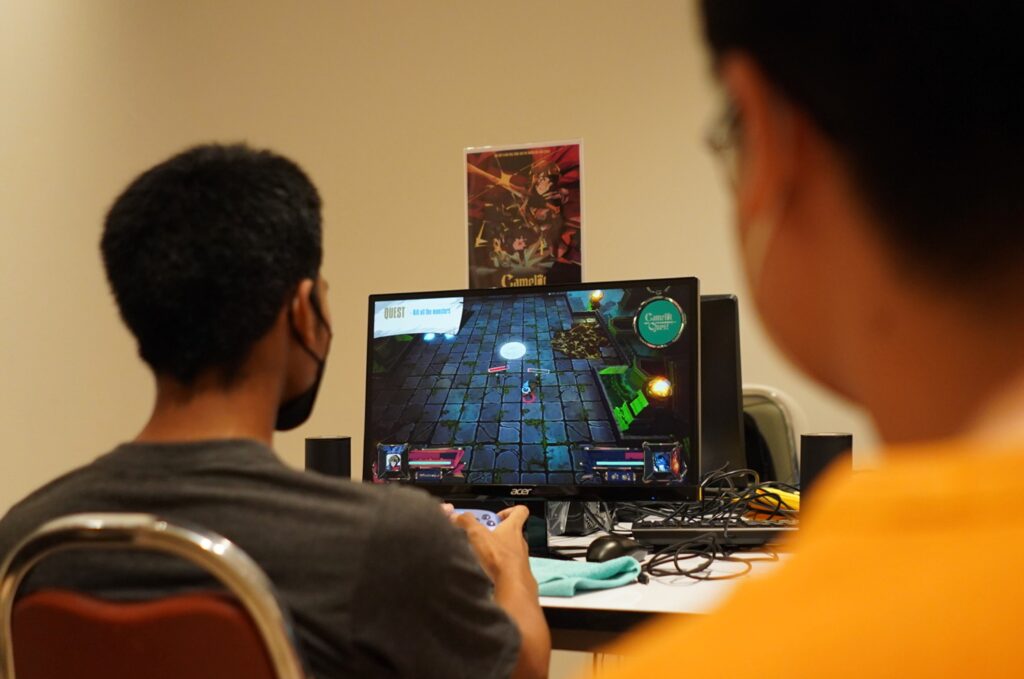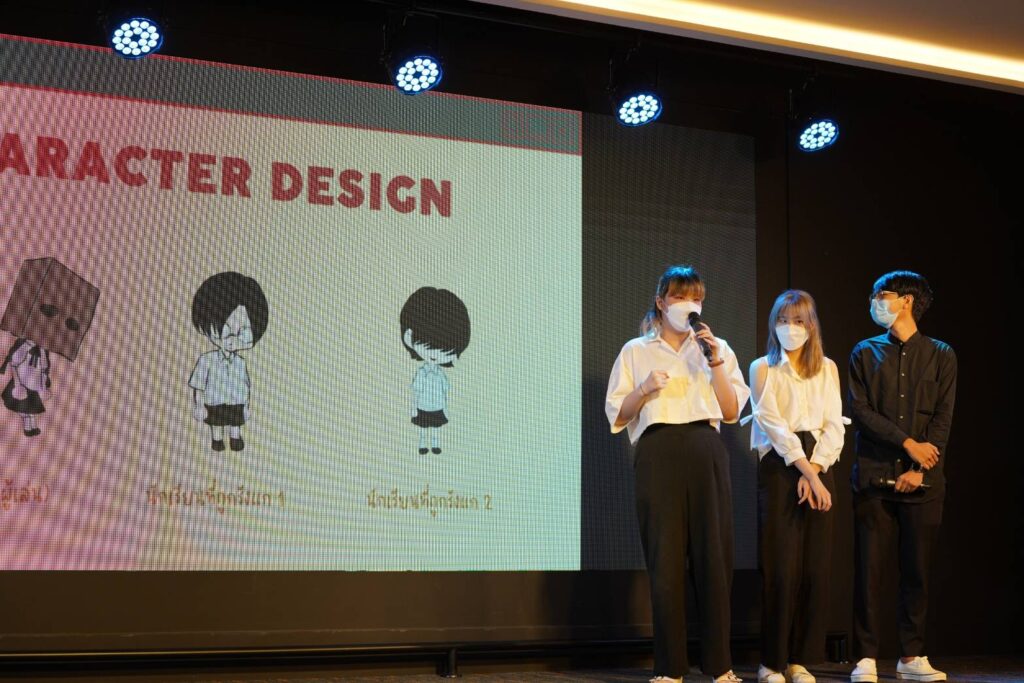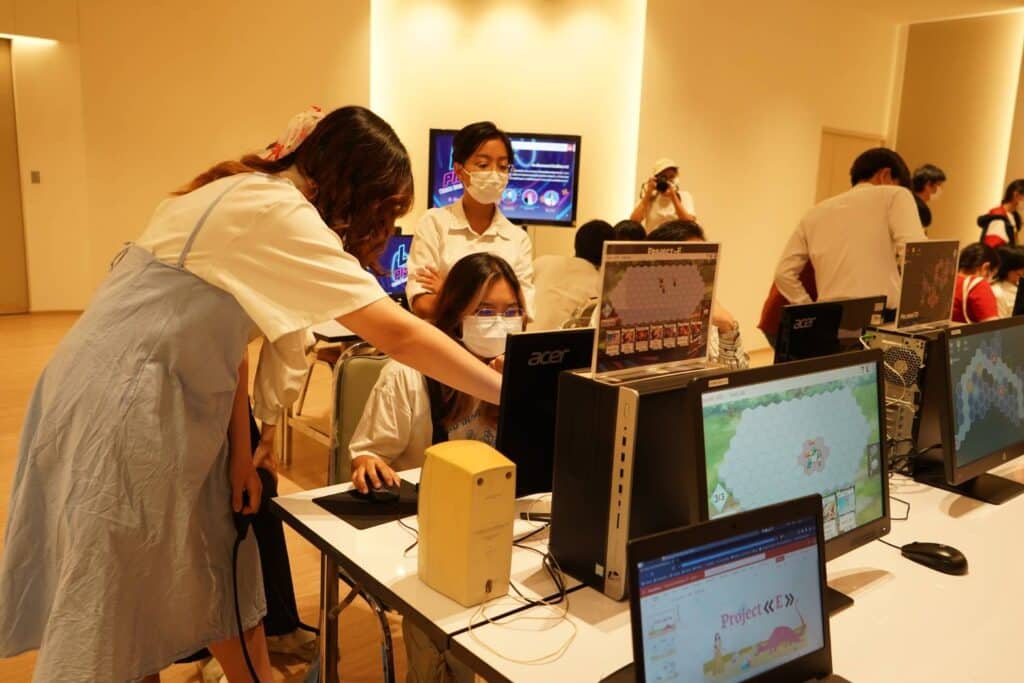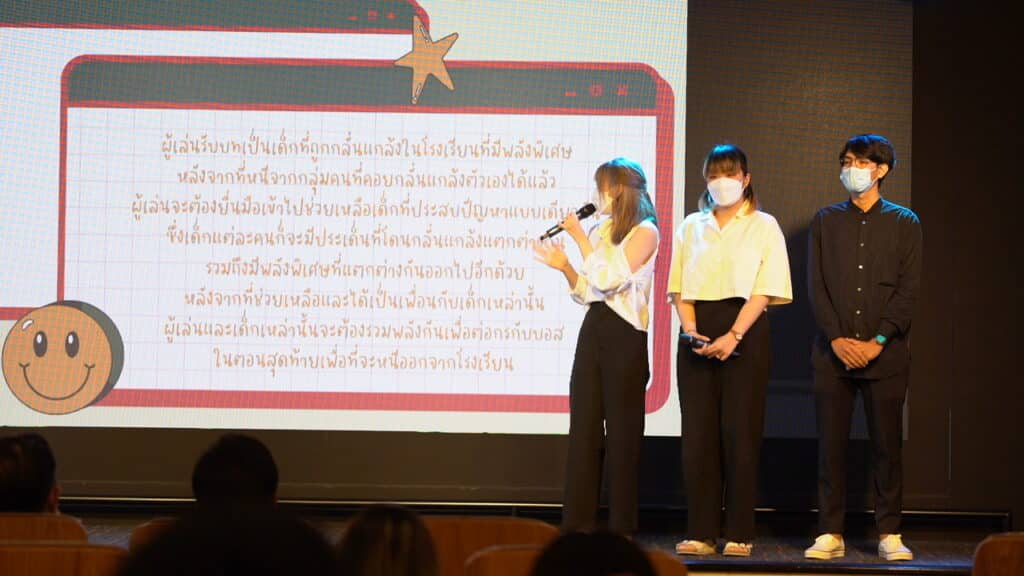To keep abreast with the world of modern communication, the Faculty of Communication Arts, Chulalongkorn University (Comm Arts Chula) is offering 2 brand new courses on creative media in the form of games through a cross-disciplinary approach alongside Chula Engineering and College of Public Health Sciences to create a media that’s accessible and appealing to the digital-age audience.
The media is ever-changing with the times and the ways people receive various types of media. At one time, most people were drawn to radio, television, or billboards but times have changed and now it is online media and online games that play a more vital role.
With the changes in the media landscape, Comm Arts Chula finds it necessary to introduce changes to the courses in its curriculum by introducing two new courses on game development as teaching aids in communication classes. The first is about the “Educational Program Creation by Ajarn Tippayaporn Pavavimol from the Department of Mass Communication“, in collaboration with the Faculty of Engineering. and The second concerns public relations in public health offered by Ajarn Watsayut Kongchan from the Department of Public Relations.
“There is currently a proliferation of new media whether it be AR VR XR or games. As communications experts, we need to keep up with these new forms of media and understand the nature of each type of media to use them appropriately for each target group. We hope to see our students become more attuned with communication technology currently available and games are a form of media that are highly popular in media creation circles at present,” Tippayaporn explained.
Games are a fun way to engage audiences
Many view games in a negative way. They focus on the addictive nature of games, and the aspect of fun and entertainment that do not offer any content. Yet, if one reconsiders those views, one can see that they are a reflection of the power that games have in attracting and engaging players. If used positively, games can certainly be a powerful tool for communication.
According to Watsayut “Games aren’t all about fun. The fun derived from games can “capture the heart and emotion” of the message receivers more effectively. Games are effective because they appeal to our emotions.”
Oftentimes, the target in our communication isn’t only about getting a message across. For example, in public health matters, even when the data is simplified by using such media as infographics one cannot grasp the message well enough to lead to behavioral changes whereas games can achieve that!
“Games provide a multi-way communication whether it is us and the game or us and other players. What happens is that we do not only gain data or information but feelings and emotions that become an essential motivation towards a behavior change.
The powerful use of games to communicate effectively with the new generation
Referring to one research work, Ajarn Tippayaporn relates that today’s youth can concentrate on something only for a few seconds. “If the media fails to attract right from the start it gets lost on the target audience. Therefore, the producer needs to find a way to captivate their attention by making the content interesting enough that the audience does not shift its attention to something else.”
Games can “hook” and “capture” the audience
“In these games, the player is pulled into a created realm becoming one of its characters, altering the story, or perhaps even creating a subplot for themselves. Games are a good way to create this connection by involving the player so that they spend more time with the media in question. This is why they have become such a powerful tool in today’s world, especially those of us who have grown up with technology, who enjoy being challenged and thrilled.”
Cross–disciplinary learning with “Let’s play game design”
The Department of Mass Media is now offering new courses that focus on Audio-Visual Media and Audio Media. Students were assigned to design prototype media using any platform they liked and were able to come up with a wide range of ideas. The course instructor was therefore inspired to enable her students to realize their dreams by actually producing the products they designed. The problem, however, was that they had the ideas and diverse narrative techniques but lacked the technological skills required in the production process.
The communications lecturer reached out to Associate Professor Dr. Vishnu Kotrajarus from the Department of Computer Engineering, well known to many as the “Game Guru.” Their collaborative efforts resulted in two integrated courses – Educational Program Creation at the Faculty of Communication Arts and Game Programming at the Faculty of Engineering. Both courses were offered for the first time in 2020 and each year students get to take part in the “Let’s Play Game Design” event to showcase their work.
In the process of learning and working together on class projects, Communication Arts students emphasize content creation, story-telling, and sound and image design whereas the Engineering students are responsible for gameplay design, the various control systems in a game, and coding to ensure that the computer game can work.
“There are challenges in work. The key is cross-disciplinary learning, and how to empower students to work with people from different fields of study. In addition, this kind of teaching is an open way of learning. Engineering students will learn about communication design and storytelling, while Comm Arts students can learn about game mechanics and the technical knowledge of computer programs.”
Computer games featured in “Let’s Play Game Design”
In the Program Creation for Education course she teaches, Ajarn Tippayaporn is open to whatever subject matter her students choose to turn into a game. It can be academic and informative or the game can also bring up pertinent social issues such as bullying or dealing with emotions. Here are a few examples of computer games created by the students:
- “Gray” – is an action role-playing game (Action RPG) that presents the topic of understanding and managing one’s emotions. The player assumes the role of a prince who journeys through various emotional monsters.
- “The Multiverse” – a puzzle-type game that presents the importance of professions via an Escape Room type of game that requires a joint pooling of competent skills from people of various professions.
- “Project-E” is the format of turn-based card games that help explain the qualities of each element in a periodic table so that learners can enjoy and understand the concepts more easily,
Those interested may follow the students’ games interactively by accessing “Let’s Play” Game Design Festival 2021 https://fb.watch/f4mue-6t-F/ along with the second year of Let’s play Game Design Festival! https://fb.watch/f4mrzXuNDk/.
Board games for public health public relations
The creation of board games has been part of a course on public relations for public health taught by Ajarn Watsayut.
“For the past three years, one notices a resurgence in the popularity of board games including among our students. We decided to experiment with board game production for communication rather than the conventional types of media like infographics, advertising, videos, and articles used in practically all other subjects.”
Ajarn Watsayut explains the design process for board games saying that “No matter what game you are designing, the first thing you must ask yourself is what should the player derive from playing such a game? You then move on to the research process to obtain enough data to be used in the design of strategies via the mechanism of the game itself. For example, if you design a game aiming at changing people’s eating behavior, the focus need not be on disease and proper treatment since this type of information is already known. Research shows that people have the information but are not able to take action accordingly. The game should then aim not for players to “know” but for them to “feel” so that they are prodded into action.”
A board game to combat “obesity”
Public health issues resulted in many topics like the spread of COVID-19, chronic infectious diseases, and lingering illnesses. In the last semester, some students brought up the subject of “obesity.”
“Board games are unique in creating emotional participation. On the subject of obesity, we will not only be showing players how to lose weight or what to eat to avoid gaining weight but we will make them feel like they are engaging with what is in front of them. The game will only boost feelings leading to immediate behavioral changes,” said Ajarn Watsayut.
“Players may think they are eating only a small slice of their favorite cake but if that comes with having to trade it in with hours of exercise or strenuous activities to burn the calories they have consumed would make them think twice the next time they pick up that cake.”
To illustrate, Ajarn Watsayut gave more examples of board games used to combat obesity:
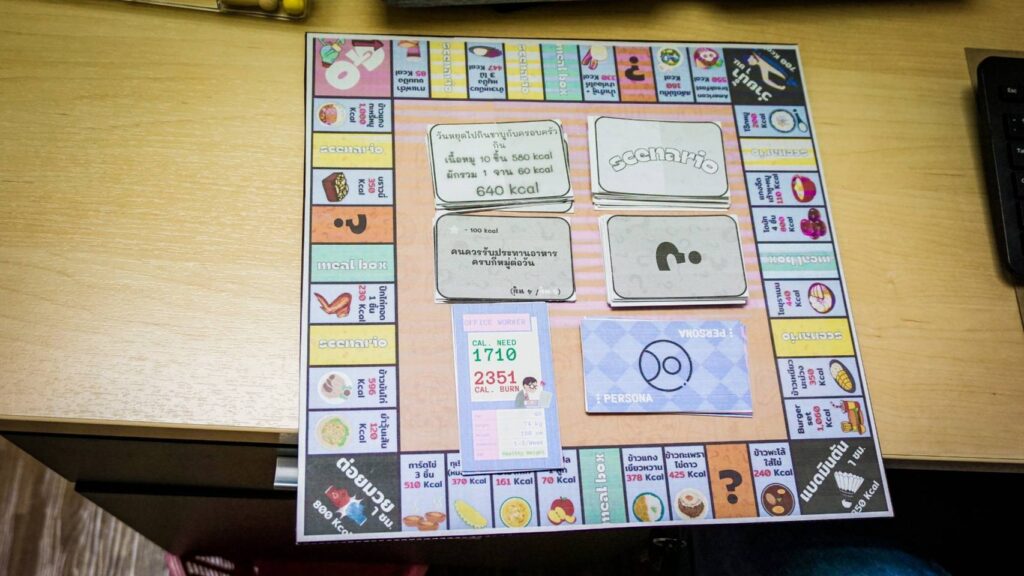
“Food Wars!” is a board game where several players roll the dice, each one taking on a different persona. Whether an office worker or a secondary school student, the persona will have the predetermined minimum level of energy that needs to be burned each day. Players will roll the dice that will land them in a box indicating food consumption, energy gained and the exercise to burn off the fat levels. The playing card format is also included in the game along with quizzes that the players are required to solve.
To score, the player must try to control the energy value appropriate to the role they are assigned. When the energy value is too low or too high from the appropriate energy in each role, the player will feel the urge to win by trying to eat or exercise to keep the energy at the right value.
In addition, information about how many calories Thai people prefer to eat and how many calories each type of activity or exercise burns is provided. This information is a reliable reference and matches what Thai people experience in everyday life.
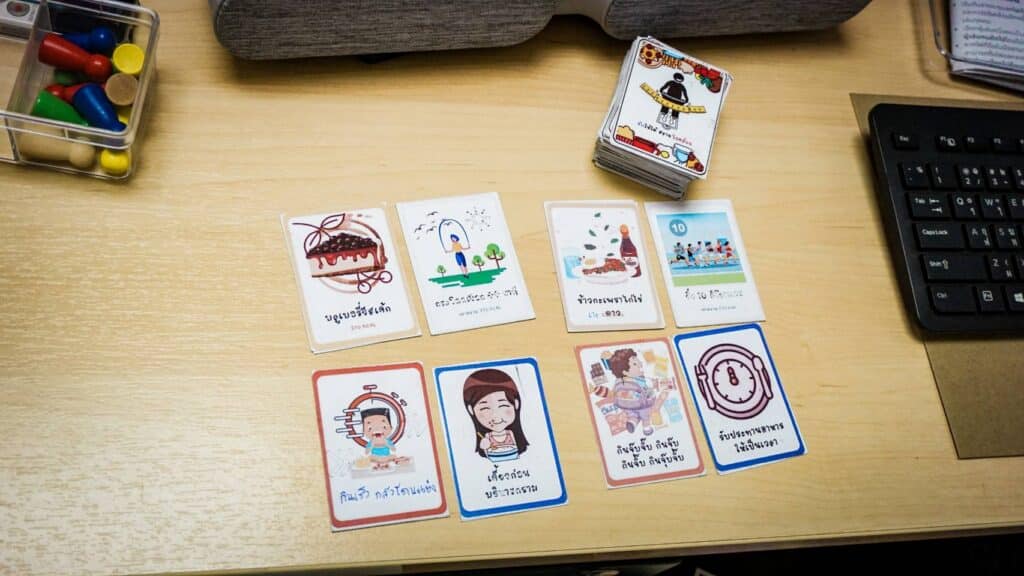
“Find the Culprit, Cure Obesity” is a paired card game in which a player draws a hand of their own, then draws a card from a friend’s stack of cards to find a match. Once a match is obtained, the player can lay down the cards in the hand. Whoever runs out of cards first wins.
There are two types of matched cards in this game:
Type 1 cards match food and activities that burn calories. The cards determine the energy consumed from eating and the energy consumed from activities in numbers. If the numbers cancel each other out, it is considered a successful match.
Type 2 cards are risk and suggestive behavior cards. If cards that cancel out one another are drawn, they are considered a match. The purpose of this game is to make players feel the difficulty of performing daily activities to burn excess calories from a normal diet every day. This will raise awareness and encourage them to avoid health risk behaviors.
The future of Communication Arts Education
The Department of Mass Communication is looking to increase their collaboration and projects with other faculties in the university especially those in the science stream specializing in public health issues. Such knowledge could be integrated with the expertise and communication techniques that the Faculty of Communication Arts has to develop media innovations and more effective communication that can be put to use in the actual surrounding context. The benefits from this would affect not only the students and the university but the society which is what we aim for at the highest level.
The prototypes for computer games and board games are now available. Any agencies wishing to try out these games or to develop their games in the courses they offer are welcome to contact one of these lecturers via their emails: [email protected], [email protected].


